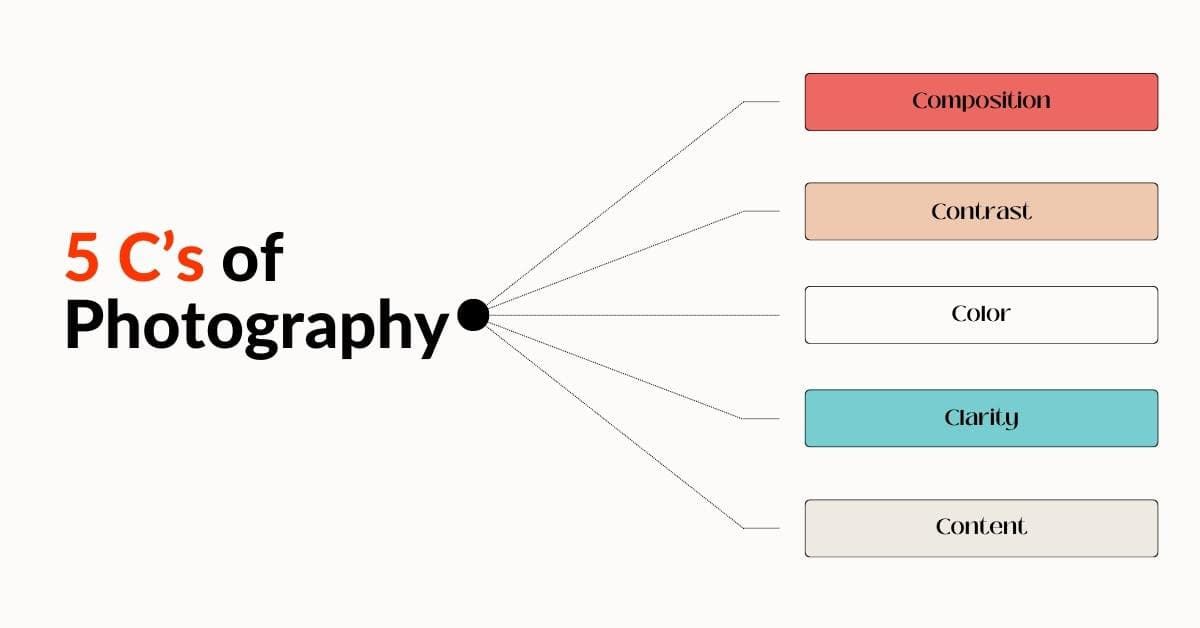Photography is a captivating art form that allows us to freeze moments in time, capture the beauty of the world around us, and express our creativity. Whether you’re a beginner or a seasoned pro, understanding the fundamental principles of photography is essential to take your skills to the next level. One such set of principles are the 5 C’s of photography. In this article, we will delve into these core concepts and provide you with a deeper understanding of how they can improve your photography.
The 5 C’s of Photography
- Composition:
Composition is the foundation of a great photograph. It involves arranging the elements within your frame in a visually pleasing way. The rule of thirds is a popular technique, where you divide your frame into a 3×3 grid and place your subject or points of interest along the lines or at their intersections. Leading lines, framing, and balance are other important aspects of composition that can create dynamic and captivating images. - Color:
Color is a powerful tool in photography. It can set the mood, convey emotions, and draw the viewer’s attention. Understanding color theory is crucial. The color wheel, for instance, can guide you in choosing complementary or analogous color schemes. Consider how different colors in your composition interact and use them to your advantage to create impactful images during photography and photo editing. - Contrast:
Contrast refers to the difference between the light and dark areas in your photograph. High contrast images often have deep shadows and bright highlights, while low contrast images have a more even tonal range. By manipulating contrast, you can emphasize details, create drama, and guide the viewer’s eye to specific elements within your photo. - Clarity:
Clarity in photography relates to the sharpness and detail in an image. Achieving clarity involves choosing the right focus point, using appropriate aperture settings, and having a stable camera to avoid blur. Additionally, post-processing techniques like sharpening and noise reduction can further enhance the clarity of your photos. - Content:
Content is the heart and soul of your photograph. What are you trying to convey? What story are you telling? The subject or content of your photo should be clear and engaging. It’s important to consider the message you want to convey and ensure that every element in your frame contributes to that message.
FAQs
Q1: Why are the 5 C’s of photography important?
A1: The 5 C’s provide a strong framework for photographers to create captivating and meaningful images. They guide you in composing visually pleasing shots, making effective use of color, contrast, and clarity, and ensuring your content is engaging.
Q2: Can I break the rules of the 5 C’s for creative effect?
A2: Absolutely! While the 5 C’s offer guidelines for strong photography, creative deviation can lead to unique and innovative results. Once you understand the rules, you can intentionally break them to express your artistic vision.
Q3: What camera equipment do I need to apply the 5 C’s effectively?
A3: While having quality equipment can be beneficial, the 5 C’s are applicable to any camera, including smartphones. It’s more about understanding the principles and how to use your equipment effectively.
Q4: How can I learn and practice the 5 C’s of photography?
A4: Learning and practicing the 5 C’s involves studying photography techniques, experimenting with your camera, and reviewing your work critically. Joining photography workshops or communities can also be a great way to gain insights and feedback.
Q5: What is the best way to improve my composition skills?
A5: Improving your composition skills involves studying composition principles, analyzing the work of other photographers, and practicing regularly. Try taking photos of the same subject from various angles and perspectives to see how composition affects the final image.
Conclusion
Understanding and applying the 5 C’s of photography – Composition, Color, Contrast, Clarity, and Content – can significantly enhance your photography skills. By mastering these principles, you’ll be better equipped to create stunning, memorable images that capture the essence of your subjects and tell compelling stories. So, grab your camera and start experimenting, and don’t be afraid to let your creativity shine through while keeping these essential principles in mind. Happy shooting!
This page was last edited on 19 February 2024, at 3:41 pm
